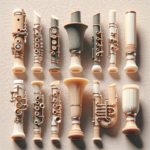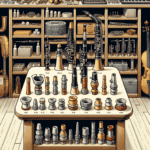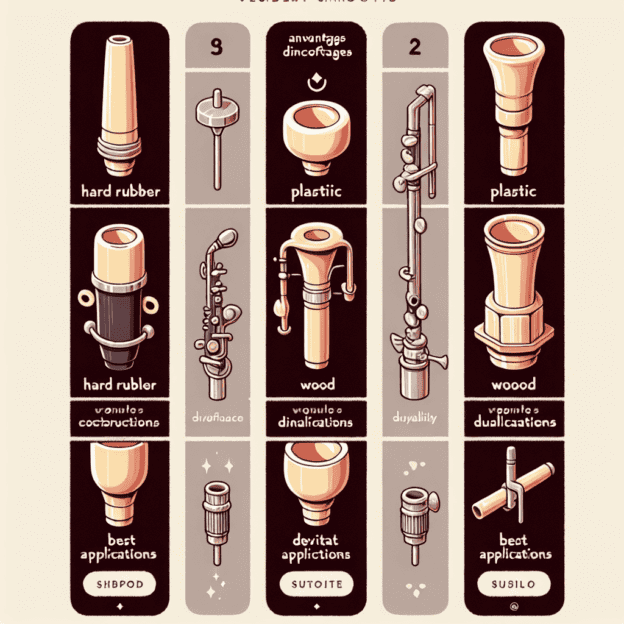Choosing the right mouthpiece for your clarinet can have a big impact on your sound quality and overall performance. The material used to make the mouthpiece is one of the most important factors that influence its characteristics. In this guide, we'll take a look at different materials used in clarinet mouthpieces, discussing their advantages and disadvantages, and how they relate to various playing styles and preferences.
1. Why Mouthpiece Material Matters
The mouthpiece connects the player to the instrument, turning breath into sound. The material affects how air flows through the mouthpiece, the vibrations created, and ultimately, the tone of the sound. Let's explore some common materials:
| Material | Tone Quality | Durability | Best For |
|---|---|---|---|
| Hard Rubber | Warm, rich | High | Jazz, Classical |
| Plastic | Limited | Medium | Beginners |
| Wood | Unique | Low | Specialty setups |
| Metal | Bright, powerful | Very High | Contemporary styles |
2. Hard Rubber Mouthpieces
Hard rubber, also known as ebonite, is a top choice for jazz and classical clarinet mouthpieces. It produces a warm, rich tone and creates a full-bodied sound. Hard rubber mouthpieces are also tough and can handle regular use.
- Pros: Versatile, warm tone; durable material; good articulation.
- Cons: Can be heavy; may take longer to break in compared to other materials.
3. Plastic Mouthpieces
Plastic mouthpieces are made from various synthetic materials and are usually cheaper than hard rubber or wood mouthpieces. Beginners often choose them because they're affordable and easy to maintain.
- Pros: Affordable; lightweight; easy to clean.
- Cons: Limited tonal quality; can feel less responsive compared to other materials.
4. Wood Mouthpieces
Wood mouthpieces are less common but can be found in some special setups. They often create a unique tonal character that many musicians find appealing. However, they need more care and are affected by changes in humidity and temperature.
- Pros: Unique tonal color; favored by some classical players.
- Cons: Less durable; requires special care; potentially more expensive.
5. Metal Mouthpieces
Metal mouthpieces, usually made of brass or stainless steel, are becoming more popular for their bright, powerful sound. They can produce sharp high notes and are often used in modern music styles.
- Pros: Bright, focused sound; very durable; often responsive.
- Cons: Can feel harsh for some players; may require adjustments for comfort.
6. Comparing Tone and Playability
When picking a mouthpiece material, it's important to think about how it affects tone and playability. Many players like hard rubber for its rich sound, while those wanting brightness and projection might prefer a metal mouthpiece. Trying different materials in various playing situations can help you understand what feels comfortable and works best for your performance needs.
7. Recommendations for Different Playing Styles
Different types of music might work better with different mouthpiece materials:
- Classical: Hard rubber mouthpieces are often preferred for their depth of tone and versatility.
- Jazz: Hard rubber or metal mouthpieces can give you the lively sound and articulation you want.
- Marching/Band: Durable plastic mouthpieces are often suggested for students because they're affordable and easy to handle.
8. Testing for Personal Preference
The best way to find out which mouthpiece material suits you is to try several options. Many music stores let you test mouthpieces, which can help you make a good choice:
- Consider comfort: Find out which materials feel most comfortable when playing.
- Be aware of responsiveness: Pay attention to how the reed reacts with each mouthpiece.
- Assess the tone: Look for the sound quality that matches the style of music you enjoy playing.
9. Maintenance of Mouthpieces
No matter what material you choose, taking good care of your mouthpiece is important:
- Regular cleaning: Always clean after use to prevent build-up.
- Inspect for wear: Regularly check your mouthpiece for signs of wear or damage.
Picking the right clarinet mouthpiece material can make your playing better and more enjoyable. Martin Freres offers a range of mouthpieces to suit different preferences, helping players of all levels find the best match for their sound. By understanding the features of various materials, from hard rubber to metal, clarinetists can make smart choices and improve their playing.







